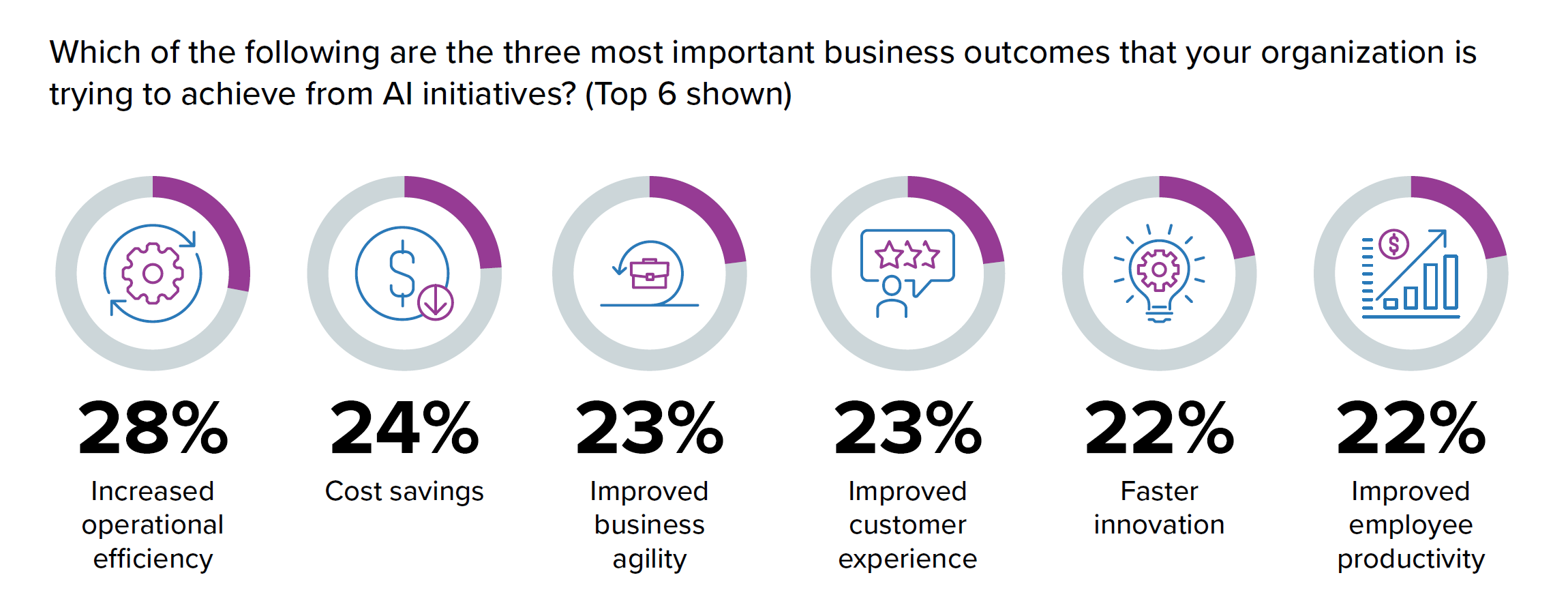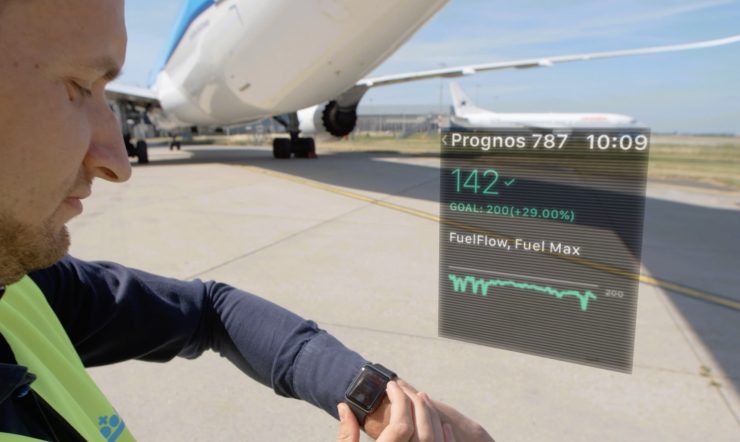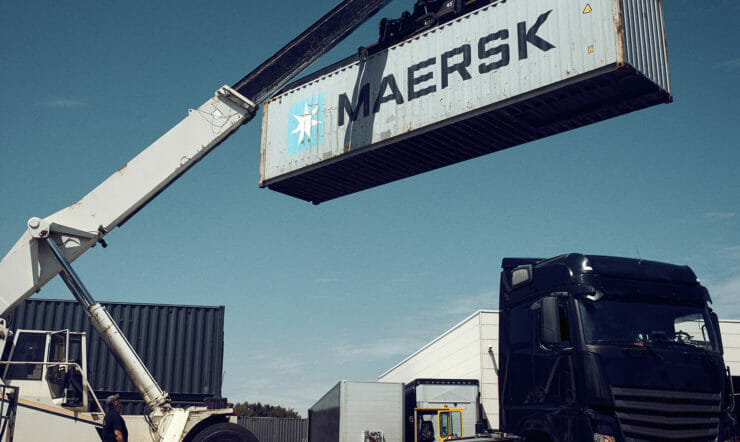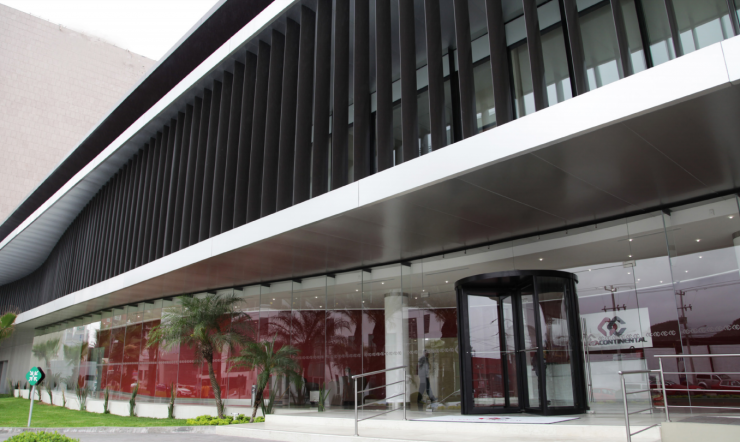2023 was a year where AI seemed to be everywhere.
From government organizations to large corporations, start-ups and more, hundreds of businesses across Europe have heard plenty of stories and buzz about AI’s potential and what it can do to transform businesses and accelerate innovation.
At Microsoft, we’re already seeing this buzz turn into something even bigger: a collective drive to make the most of this technology.
The latest IDC InfoBrief, commissioned by Microsoft, From Buzz to Brilliance: Achieving Business Success with AI in Europe (doc #EUR251499723, December 2023) is testament to this. This study of nearly 590 business leaders and decision makers from around Europe shows that 67% of companies are already using AI at their organizations.
Adoption has so far been both versatile and widespread across a range of sectors and business sizes. And among those already using it, a whopping 38% have seen a return of investment in less than 12 months – plus a 3.3-fold return on each dollar spent on AI projects or initiatives. There is also evidence that organisations are already seeing stronger competitive differentiation, improved business resilience, higher levels of customer experience and much more.
That’s great proof of the undisputable benefits that AI offers and the speed at which it can come.
But what is it that these organisations have done to turn buzz around AI into brilliance for their business?
The answer lies in clarity around objectives, and the role of leaders in creating a culture where AI adoption, experimentation and optimisation can flourish. I wanted to share some reflections from the new IDC InfoBrief, which contains a roadmap for capturing business value for AI within 12 months, as well as some observations from customers who have achieved this in practice.
The importance of clarity in your roadmap
63% of companies in Europe have an AI strategy already linked to their business objectives according to the IDC InfoBrief – and it appears to be the key first step in determining accelerated success with AI. By taking a step back and considering this relationship at the start, you will get a precise idea of where AI will sit in your roadmap and how you will create value.

Source: IDC InfoBrief, sponsored by Microsoft, From Buzz to Brilliance: Achieving Business Success with AI in Europe (doc #EUR251499723, December 2023)
There’s an example of this action with Kry, a healthcare company who operate in Sweden, the UK and France. Making healthcare accessible is a key component of their mission. But with healthcare systems around the world facing unprecedented pressures and aging populations, this is a significant challenge. Kry’s strategy for generative AI targeting solving operational inefficiencies in healthcare delivery and provide a more personalised, improved customer experience for every patient. They’ve now delivered over 200 million patient interactions to date and clinicians are now delivering more personalised care for patients, achieving a 4.8 out of 5.0 score for patient satisfaction. And on top of that, their employees are now more productive too. By creating clarity on strategic outcomes, the Kry team were able to achieve the value they wanted from AI.
After you’ve determined where you will align AI to your overall company goals, broader experimentation, implementation and optimization is next on your roadmap. You can expect to move through this timeframe from between 3-12 months, according to the IDC. Some key considerations for how to move through each stage of this timeframe is to keep evaluating your strategy, use of responsible AI, employee skilling and the budget you will invest.
With 35% of companies said that they lack employees with the skills needed to learn and work with AI, creating clarity in your workforce about the capability and use of AI is of particular importance. On this topic, I really enjoy sharing the example of Iveco Group, who are a large manufacturing business in Italy.
They decided to tackle this skilling challenge head-on when– the adoption of AI went from just a handful of employees and IT to broader functions. They focused on teaching users about AI in a secure environment and used a website, webinars and training to bring their people up to speed. Generative AI is now used by many business units in their organisation – and it goes to show a solid knowledge transfer between IT and business teams will allow for seamless AI alignment and initial adoption, as well as accelerated value.
The creation of clarity in your roadmap is what leads to maximum value in your experimentation, implementation and optimisation with AI. As time goes on, ensuring that you revise your thinking and enhance it based on market dynamics as you go along is key.
The importance of culture
C-suite leaders have a fundamental role to play when it comes to successfully implementing AI. From initial inception to outlining a roadmap and optimizing its adoption, leadership members need to be involved across all parts of their businesses’ AI journey.
But one of the most interesting (and important) changes AI has brought to the business world is its influence on culture and how it’s emphasized values of experimentation, empowerment and speed of execution.
By making space for experimentation in their culture, leaders can help nurture testing, learning and cross-functional collaboration. All of these are truly essential to scaling innovation, and ensuring AI models can be iterated upon and learnt from the business as a whole.
An organization that’s empowered to accelerate AI value is a place where everyone can continue to successfully develop AI to achieve the goals of your business. Take EDP, a global energy business based in Portugal. Their mission is to drive sustainability in the sector and become net-zero by 2040. It’s a mission rooted in data and it’s the adoption of the cloud, machine learning and AI across their workforce as well as AI training and upskilling programs that made them turn into a truly-data driven organisation to achieve this goal. They feel now empowered to innovate and ready to realise the benefits of this technology.
That means technology doesn’t belong just to IT anymore – it’s something that touches everyone. By giving people the autonomy to make decisions on their use of AI, leaders will unlock more and more meaningful innovation to fit use cases and projects across your business.
And as for speed of execution – this is where we’re seeing the strongest correlation with AI success. Speed of execution is all about improving decision making, becoming more agile and using technology to accelerate communication and workflow. AI innovation is truly bending the curve in these regards because of how little it takes to go from ideation to execution. This gives leaders an irreplaceable role to play: making sure their businesses are able to keep up.
It’s important to mention that these values are, in no way, meant to replace the way we’ve been conceiving technology so far. On the contrary, they need to be embedded into the company culture as complimentary.
From buzz to brilliance
Driving success in AI requires clarity with your organization’s over-arching strategy and an emphasis on certain values in your culture, which should always include trust and innovation to improve the customer’s experience.
By downloading the IDC InfoBrief on the link below, you can start your journey to accelerating value with AI from the very initial stages of adoption to experimentation and optimisation.
Together, let’s make 2024 the year where buzz around AI turns into wider brilliance in its adoption and value for organisations everywhere in Europe.




















